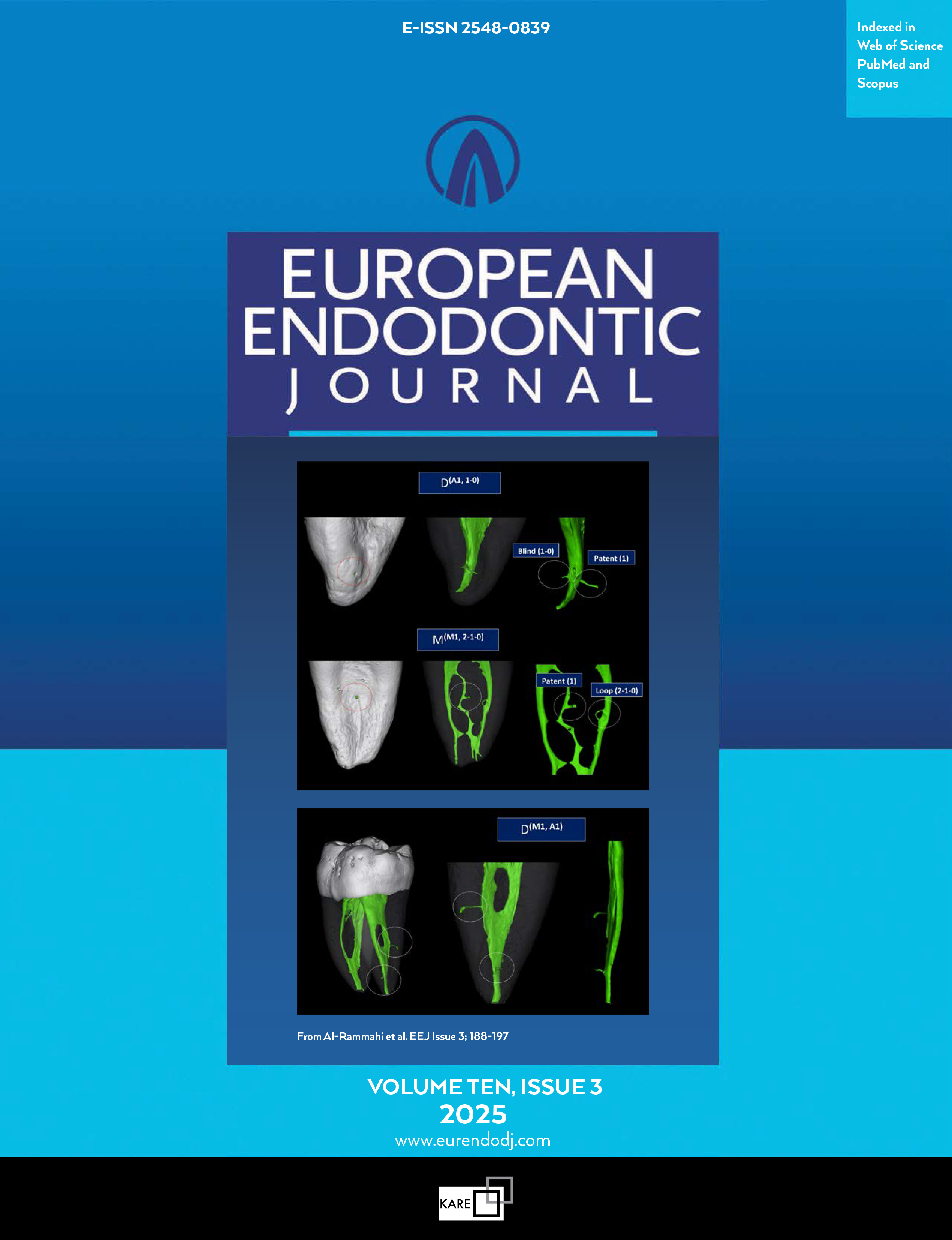Metrics
2024 IMPACT FACTOR
5 year Impact Factor
Eigenfactor Score
2024 CiteScore
Journal Citation Reports
(Clarivate 2025, JIF Rank)
Influence of Apical Preparation Size on Effective Conventional Irrigation in the Apical Third: A Scanning Electron Microscopic Study
Seth Butcher1, Abeer Mansour2, Mohamed Ibrahim31Department of Surgical Science, Division Endodontics, Marquette University, School of Dentistry, Milwaukee, USA2Department of Endodontics, Mansoura University, Faculty of Dentistry, Mansoura, Egypt
3Department of Surgical Science, Division Endodontics, Marquette University, School of Dentistry, Milwaukee, USA; Department of Endodontics, Mansoura University, Faculty of Dentistry, Mansoura, Egypt
Objective: This study aimed to investigate the relationship between final apical preparation size and smear layer removal in the apical third using conventional irrigation in mandibular bicuspids.
Methods: A total of 66 extracted human mandibular bicuspids with comparable root canal morphology were equally divided into five experimental groups and a control group (n=11). Based on their experimental group, samples were instrumented up to size 25, 30, 35, 40, or 45 with 0.04 taper using 2.5% sodium hypochlorite (NaOCl) as the irrigant. Final irrigation was performed with 17% EDTA followed by 2.5% NaOCl. The control group was instrumented up to size 45/.04, and was irrigated with distilled water. Samples were sectioned buccolingually, and they were qualitatively evaluated under scanning electron microscope for efficacy in smear layer removal. The KruskalWallis and MannWhitney U tests were employed for statistical analysis.
Results: Statistical analysis revealed comparable removal of smear layer in the coronal and middle thirds of all experimental samples regardless of grouping. When using file size larger than 35, removal of smear layer in the apical third significantly improved (p<0.05). No significant difference was observed between 40/.04 and 45/.04.
Conclusion: Under the conditions of this study, using conventional irrigation, apical enlargement more than size 35/.04 is essential to enhance removal of smear layer at the apical third.
Manuscript Language: English
(1471 downloaded)


